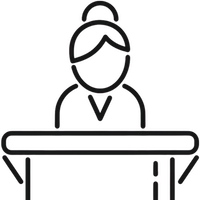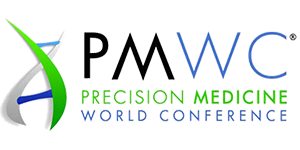Levi Garraway’s responses to interview questions from Tal Behar, Precision World Medicine Conference
1. IO focus: If you could green-light one immuno-oncology combination for a definitive Phase 3 in 2026, which patients benefit, and what one biomarker makes or breaks it?
In solid tumors, it seems as though we may be entering an era where IO/ADC combinations could have benefit across multiple indications. Therefore, I’d like to see a “next-gen” immuno-oncology asset combined with a “next-gen” ADC in (IO-responsive) solid tumors enriched for ADC target expression. Beyond that simple tissue biomarker, I would love to see our machine learning colleagues bring forth new and generalizable imaging “biomarker” algorithms – or possibly multimodal imaging/genetic algorithms – that can help discern up front who is most likely to benefit from IO-based therapy, and who is unlikely to benefit. With such information in hand, patients could increasingly be shifted to other therapeutic options or clinical trials without having to wait until formal treatment failure (oftentimes, clinical progression brings new complications which in turn limit future therapeutic choices… so pivoting early where possible could make the difference for many patients).
2. Beyond IO: Beyond CAR-T, which single modality or precision therapy will move the OS needle in solid tumors in the next 3–5 years, and what single trial readout or biomarker is your litmus test for success?
Here, I’ll call out bispecific antibodies that include an IO component – and I’ll also cheat a bit by pointing out that this modality is quickly evolving to include trispecific moieties. We’ve already seen the transformative potential of next-generation bispecific antibodies across solid tumors and hematologic malignancies. As trispecific variations emerge, this impact should only continue to grow. As much as I enjoy genetic and molecular biomarkers, what I love most is seeing deep responses on imaging; e.g., impressive “partial responses” (PRs) in solid tumors, or numerous “very good partial responses” (VGPRs) in hematologic malignancies – and of course, complete responses (CRs) in all instances. These almost always translate into meaningful progression-free survival and overall survival, and seeing those types of patient results just never gets old.
3. AI with receipts, not buzzwords:
Where is Roche already using AI/gen-AI in product development (e.g., de-novo design, trial design/patient selection via clinico-genomics, digital pathology)? What hard KPIs prove impact (hit rate ↑, cycle time ↓, success probability ↑), and what’s the next 12-month expansion?
Two things are true: (1) It is hard to find a segment of the R&D continuum that is not being augmented by AI in some way; and (2) We are still only at the very beginning of our AI journey. (So we certainly don’t have all of the receipts yet!)
Specifically in our product development organization, AI/ML approaches are starting to play a major role in improving critical decisions made throughout the process of clinical trial design and execution. This includes indication selection, defining endpoints, inclusion and exclusion criteria, optimizing patient risk stratification, enhancing the PTS of a clinical program, and monitoring of safety-related data as the trial proceeds, to name a few. Here, we leverage structured data, data from previous trials and real-world evidence (RWD), including imaging or multimodal data. This also can enable “digital twins” to serve as comparator arms in internal trials for decision-making, or even reducing the number of participants needed.
We are already starting to see evidence that AI-driven systems can reduce human error and operational risk while improving oversight. Generative AI can support the creation of essential clinical trial documents, such as protocols, statistical analysis plans (SAPs), clinical study reports (CSRs), and assist in generating statistical code for programming tasks. Finally, we expect agentic AI to enable a further transformation across product development by augmenting a wide range of workflows. Together, these ongoing efforts should markedly increase the innovativeness, efficiency, consistency, and accuracy of our late-stage R&D engine.
4. IO reality check (beyond slogans):
Which combinations or “checkpoint 2.0” strategies (e.g., PD-(L)1 + anti-VEGF, costims, cytokines, TIGIT, etc.) are showing durable, clinically meaningful benefit in solid tumors? What biomarkers (ctDNA/MRD, pCR/MPR, spatial profiling) will Roche insist on to make them stick in practice?
As a general rule, emerging IO therapies that have shown particular promise are often those that can help cytotoxic T-cells do their job even better (as opposed to those that act on other types of cells or factors in the immune microenvironment). Several bispecific antibodies and novel therapeutic combinations that have shown promise in recent clinical studies arguably are working through that mechanism. At the same time, we have to be honest: many immunotherapy hypotheses that seemed promising in the lab didn’t pan out clinically; and, conversely, there are now examples that show high clinical promise that were not necessarily predicted in preclinical studies. So, going forward we certainly do need to keep the bar high regarding specific therapeutic hypotheses, including the clinical or molecular sub-populations in whom the mechanism is most likely to work. Ultimately, however, the proof is in the clinic, which usually requires robust single-agent activity nowadays. Without good single-agent activity, it is often necessary to complete fairly large phase 2 studies before you have any real sense of efficacy, and even then, disappointments can still happen in subsequent pivotal trials
5. Where’s the puck really going?
If you had to allocate Roche R&D focus over the next 3–5 years across oncology (incl. IO), cardio-metabolic/obesity, neuroscience, and other precision areas, what moves up or down vs. five years ago—and why? What does that mean for BD/partnerships?
As a large innovative pharmaceutical company, our goal is always to “follow the science”, by which we mean fundamental discoveries that could lead to transformative medicines. In doing so, we try not to be overly biased toward one therapeutic area versus another. Having said that, oncology remains one of the largest areas of unmet need in all of human disease. We need look no farther than the waiting rooms of countless cancer centers around the globe that are crowded with patients who need care. Many of us (myself included) have witnessed the ravages of cancer within our own families or amongst our dearest friends and loved ones. While it’s clearly true that scientific advances are happening in multiple therapeutic areas at an unprecedented scale – and we will invest to bring great medicines across a range of diseases – substantial investment in oncology remains of paramount importance.








